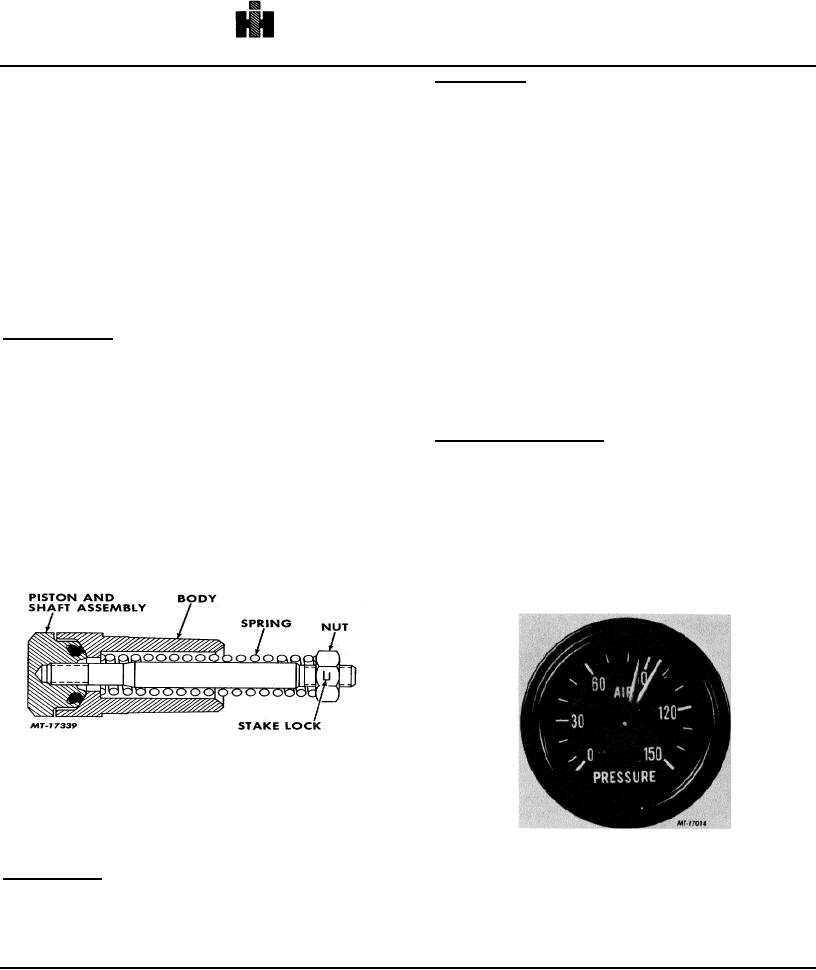
BRAKES-AIR
TRUCK SERVICE MANUAL
SERVICE CHECKS
Leakage Test
1. With air brake system charged, test with soap
Leakage at the piston in the body should not
suds for leakage past the key. Also check for
exceed a 3" soap bubble in 3 seconds. If air leakage is
leakage through the body by coating the outside
excessive the valve must be replaced since it is only
of the drain cock with soap suds. Leakage in
serviced as a complete component.
excess of a 3" soap bubble in 3 seconds is not
The safety valve should be set to "blow off" at
permissible.
approximately 150 pounds. The pressure setting may be
2. Leakage is caused by dirty or scored key or
adjusted by turning the adjusting nut clockwise to raise
body. Leakage due to dirt is corrected by
the pressure setting and turning the adjusting nut
cleaning parts and applying a thin coating of Item
counterclockwise to lower the pressure setting.
1 in LUBRICANT SPECIFICATIONS on the key.
Leakage due to a scored key or body cannot be
Since the safety valve must be removed to perform any
repaired and the drain cock must be replaced.
adjustments, it is suggested that the valve be replaced
when any defect is detected.
SAFETY VALVE
CAUTION: When replacing the safety valve be sure to
DESCRIPTION
drain all air from the supply reservoir. Draining the
primary and secondary reservoirs are not required since
The purpose of the safety valve is to protect the air
they are protected by check valves.
brake system against excessive air pressure. Should the
air pressure in the air brake system rise above the
AIR PRESSURE GAUGE
setting of the safety valve at 150 pounds, the valve
DESCRIPTION
opens and permits pressure above 150 pounds to be
exhausted.
The purpose of the air pressure gauge is to
It is located on the supply reservoir.
register the amount of reservoir air pressure in the air
system. While air pressure gauges of this type are
The safety valve is a piston type valve (Fig.
commercially accurate, they must never be confused
2). The piston is equipped with an O ring type seal which
with or substituted for test air gauges, which are intended
seats in the body of the valve.
primarily for accurately checking air pressure in the air
Fig. 2 Sectional View of Piston Type Safety Valve
MAINTENANCE
Once each year or every 100,000 miles the safety
valve should be removed and thoroughly cleaned.
SERVICE CHECKS
Operating Test
The safety valve may be tested to be sure it is
operative by pulling the exposed end of the piston. This
removes the spring load from the piston and permits the
valve
to
143

